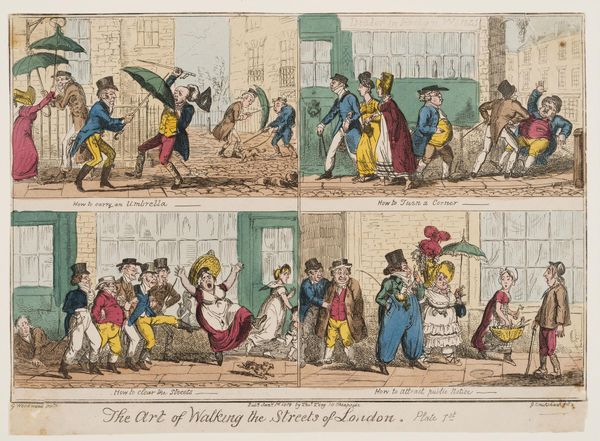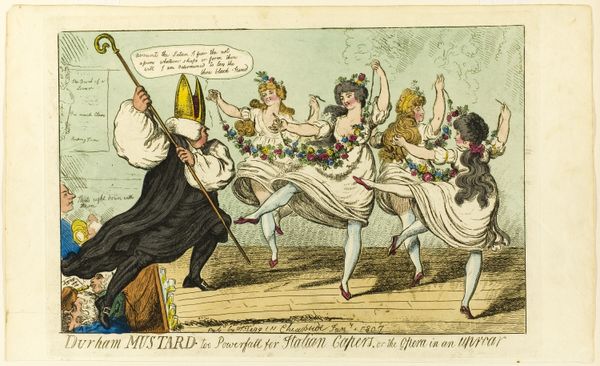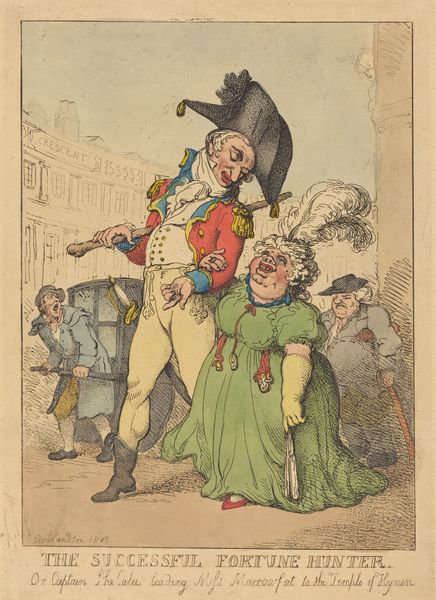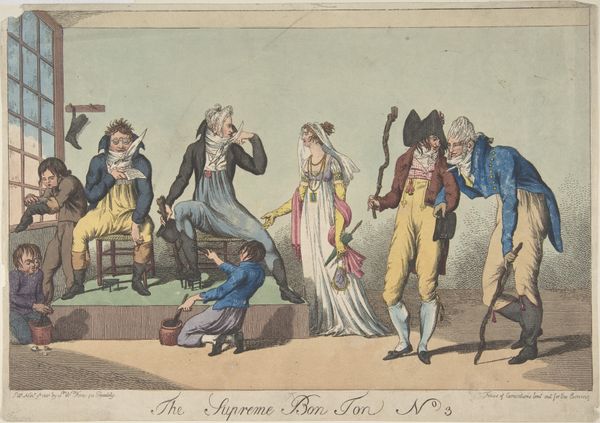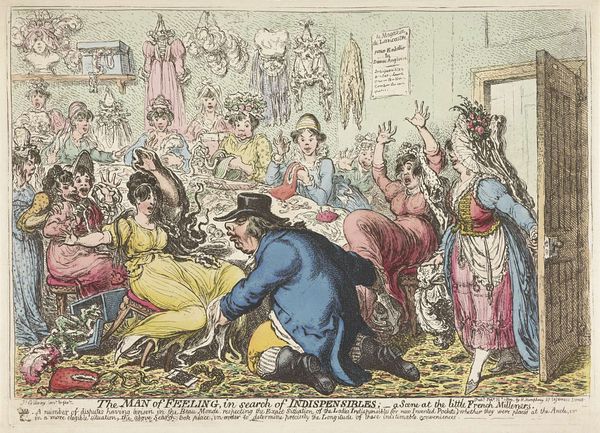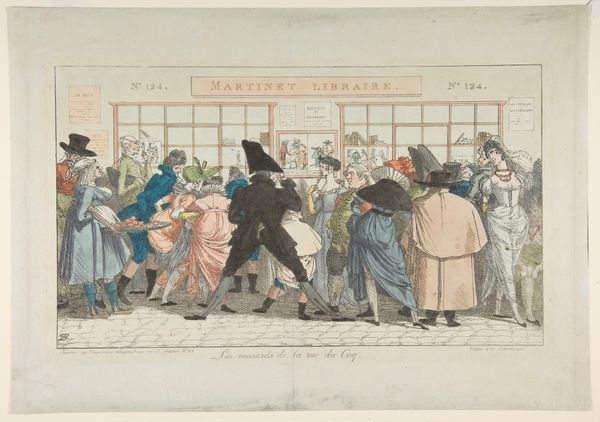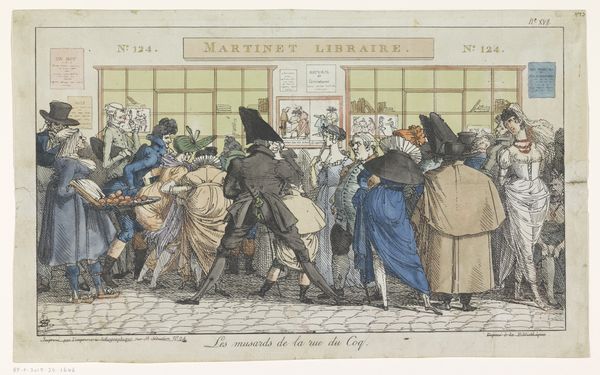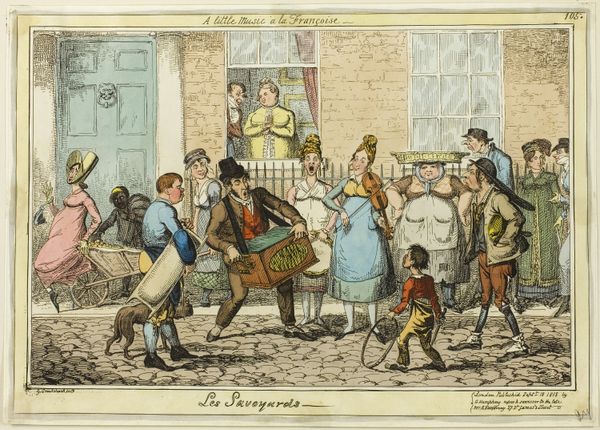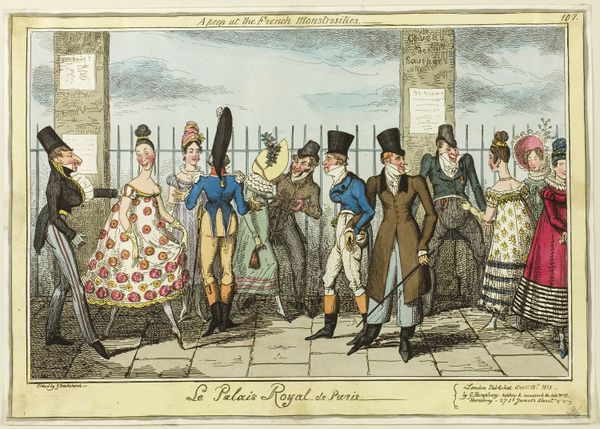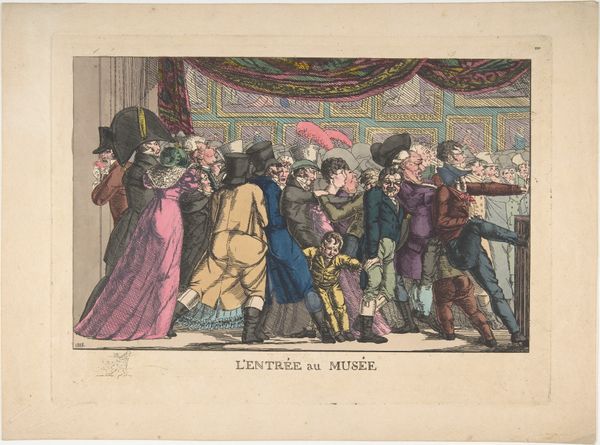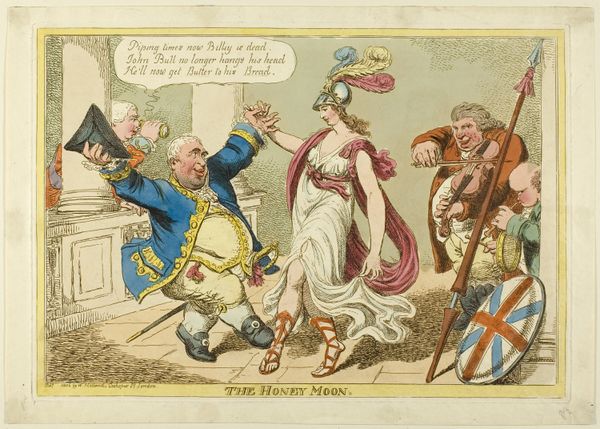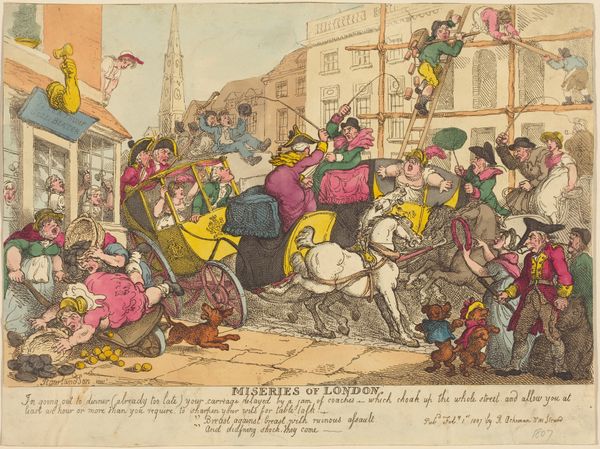
Menigte voor de etalage van uitgever Aaron Martinet in de Rue du Coq te Parijs c. 1805 - 1819
0:00
0:00
lithograph, print, etching
#
lithograph
# print
#
etching
#
caricature
#
romanticism
#
cityscape
#
genre-painting
Dimensions: height 227 mm, width 379 mm
Copyright: Rijks Museum: Open Domain
Curator: This print, made by Thomas Rowlandson circa 1805-1819, depicts a crowd in front of the shop of Aaron Martinet, a publisher in the Rue du Coq in Paris. Rowlandson used etching and lithography. What is your first take? Editor: Visually, it’s a chaotic ballet of color and form. The figures, almost caricatures, are dynamic, yet flattened—drawing my attention across the surface and to the shopfront overflowing with imagery. Curator: Indeed. Rowlandson, although British, frequently commented on French society through his art. Note the shop’s signage “Marchand de Estampes,” this bustling scene illustrates the democratized dissemination of images via print culture. Prints democratized imagery by bringing art and political satire to a broader public, shaping public discourse. Editor: The almost frantic energy visualized in this composition certainly supports that argument. Look at the exaggerated lines of the figures, the way their bodies almost collide! Curator: Rowlandson critiques the *flâneur*, turning the act of observing into a spectacle of social commentary. This particular street, Rue du Coq, was known for its print shops and politically charged caricatures at the time. So, the “crowd” is no accident, this illustrates how people sought and consumed images. Editor: And consumed *greedily,* I would suggest, given their overemphasized features. Beyond the historical context, what is immediately striking is how Rowlandson guides the viewer's eye with contrasting colors—that striking blue coat against the yellow breeches really pops, dividing the foreground and creating a sense of depth amid the throng. Curator: The humor definitely speaks to British perceptions of French society during this period. And perhaps it reflected fears of revolutionary ideals circulating through print. Editor: Certainly, a good representation of how the aesthetic and historical elements entwine. I think it serves as a vivid reminder of how potent images were—and continue to be. Curator: A perfect observation about Rowlandson and the enduring power of the printed image in shaping public opinion and revealing cultural values.
Comments
No comments
Be the first to comment and join the conversation on the ultimate creative platform.
